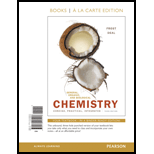
a.
To determine:
The type of transport (passive diffusion, facilitated diffusion, or active diffusion) will occur in oxygen.
Introduction:
Passive diffusion is the way in which movement of ions, molecule substances across the membrane without the need of energy. Facilitated diffusion is the process of spontaneous passive transport of molecules or ions across the membrane. Active diffusion is the transport way in movement of molecules across a membrane from the region of higher concentration to lower concentration so it required energy for this transportation.
b.
To determine:
The type of transport (passive diffusion, facilitated diffusion, or active diffusion) will occur in glucose, no energy required.
Introduction:
Passive diffusion is the way in which movement of ions, molecule substances across the membrane without the need of energy. Facilitated diffusion is the process of spontaneous passive transport of molecules or ions across the membrane. Active diffusion is the transport way in movement of molecules across a membrane from the region of higher concentration to lower concentration so it required energy for this transportation.
c.
To determine:
The type of transport (passive diffusion, facilitated diffusion, or active diffusion) will occur in
Introduction:
Passive diffusion is the way in which movement of ions, molecule substances across the membrane without the need of energy. Facilitated diffusion is the process of spontaneous passive transport of molecules or ions across the membrane. Active diffusion is the transport way in movement of molecules across a membrane from the region of higher concentration to lower concentration so it required energy for this transportation.
d.
To determine:
The type of transport (passive diffusion, facilitated diffusion, or active diffusion) will occur in
Introduction:
Passive diffusion is the way in which movement of ions, molecule substances across the membrane without the need of energy. Facilitated diffusion is the process of spontaneous passive transport of molecules or ions across the membrane. Active diffusion is the transport way in movement of molecules across a membrane from the region of higher concentration to lower concentration so it required energy for this transportation.
Want to see the full answer?
Check out a sample textbook solution
Chapter 8 Solutions
GENERAL ORGANIC+BIO...(LL)-W/MOD.ACCESS
- Why is scurvy caused what are its symptomsarrow_forwardFish kills regularly take place on hot summer days. Fish kills occur in summer due to __ a. eutrophication b. increase in dissolved oxygen c. increase in biological oxygen demand d. decrease in dissolved oxygenarrow_forwardCalculate the mass in grams of NaF needed to prepare 0.50 L of 2.25 M NaF solution. Enter your answer with one decimal place. Do NOT include unitsarrow_forward
- 2 9 Determine the Gas Densities of the following. Please show the step by step solution or it will be a wrong answer. Help me pleasearrow_forwardMagnesium has a density of 1.738 g/cm3. Using the density, determine the concentration of a solution made by dissolving 12.6 cm3 of magnesium in 72.0 L of water.arrow_forwardWhat is the significance of Digestion? Why should it be done before Filtration?arrow_forward
- 35.What is meant by the phrase "like dissolves like"? A. Solutes will dissolve in solvents of similar polarity. B. Solutes will dissolve in solvents of opposite polarity. C. Solutes will dissolve in solvents of similar molar mass. D. Solutes will dissolve in solvents regardless of polarity. E. Solvents will dissolve in solutes of opposite polarity.arrow_forwardWhy plasma is rare on earth? Not less than 10 sentences.arrow_forwardJenny mixes up a batch of pancake batter, then stirs in some chocolate chips. As she is waiting for the first few pancakes to cook, she notices the chocolate chips sinking to the bottom of the clear glass mixing bowl. The chocolatechip batter is an example of a ________. a. solvent b. solute c. solution d. suspensionarrow_forward
- Daltons law states tha a. The volume of gas that will dissolve and the solvent is proportional to the solubility of the gas and the gas pressure b. gas volume and temperature are directly proportional c. gas volume and pressure are inversely proportional d. in a mixture of gases like air the total pressure is the sum of the individual partial pressures of the gases in the mixturearrow_forwardb)A factory has wastewater discharge into river. It is known ChemicalA can be hydrolyzed. Draw concentration profile(concentration versus distance)of A and B on the same graph and explain the difference. (assume both of these compounds have equal initial mass)arrow_forward2 It is a type of solution with low concentrations ? Select one: a. concentrated b. unsaturated c. dilute d. saturatedarrow_forward
- Chemistry: Matter and ChangeChemistryISBN:9780078746376Author:Dinah Zike, Laurel Dingrando, Nicholas Hainen, Cheryl WistromPublisher:Glencoe/McGraw-Hill School Pub Co

 Chemistry for Today: General, Organic, and Bioche...ChemistryISBN:9781305960060Author:Spencer L. Seager, Michael R. Slabaugh, Maren S. HansenPublisher:Cengage Learning
Chemistry for Today: General, Organic, and Bioche...ChemistryISBN:9781305960060Author:Spencer L. Seager, Michael R. Slabaugh, Maren S. HansenPublisher:Cengage Learning Introductory Chemistry: A FoundationChemistryISBN:9781337399425Author:Steven S. Zumdahl, Donald J. DeCostePublisher:Cengage Learning
Introductory Chemistry: A FoundationChemistryISBN:9781337399425Author:Steven S. Zumdahl, Donald J. DeCostePublisher:Cengage Learning





